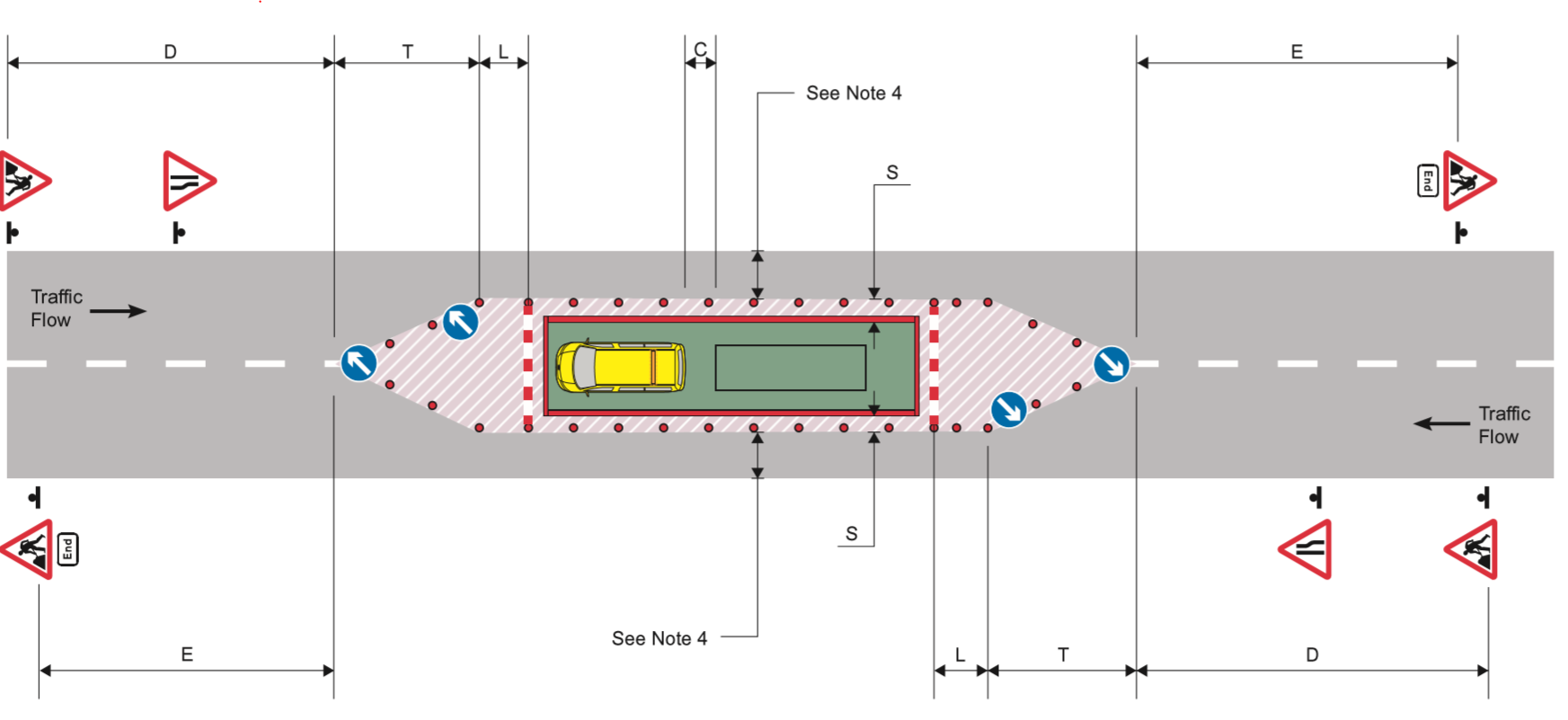The basic layouts in sections Footway and footpath works and the page below cover approach signing and guarding in areas with speed limits of 30 mph or less.
For three or more lane single carriageways you should consult your supervisor, manager or other competent person.
Exceptions are permitted in the case of works undertaken between parked vehicles (see the Parked vehicles section below).
Parked vehicles
On roads where vehicles are parked and are likely to be present for the duration of the works:
- works in the space between parked vehicles need no advance signing or lead-in or exit taper of cones, provided that the whole works, including the safety zone, does not extend beyond the line of vehicles;
- provision must be made for the possibility that parked vehicles might be moved. Should this happen, the site must, as far as is practicable, revert to the basic site layout with lead-in taper of cones;
- your pre-works and ongoing risk assessments need to reflect the conditions on the site, such as parking on one or both sides of the street, and possible changes to the parked vehicles at or near the site; and
- if you are working within designated parking spaces, the consent of the highway authority will be required before carrying out the works.
All other signing (other than advance signing) and the necessary guarding are still required at sites with parked vehicles.
Works vehicle
If you want to park a works vehicle in front of the works area to give some physical protection or to work from it, keep a minimum distance (C) between the vehicle and the works of:
- 2 metres, for a speed limit of 30 mph or less; or
- 5 metres, for a speed limit of 40 mph or more.
This distance will provide some protection for operatives if the vehicle is struck by another vehicle.
Note: When you are parking a conspicuous works vehicle in front of the working space, a traffic barrier will still be required, as shown in the Basic layout with a works vehicle figure in the Coned area section of this Code. It must be placed in front of the vehicle, and replaced if the vehicle is removed.
The longways clearance (L) is measured from the end of the lead-in taper to the traffic barrier. This is part of the safety zone, not part of the works area.
The existing speed limit or temporary speed limit approved by the highway authority should be used to determine the appropriate clearances.
Caution: If you are working from the back of a vehicle, try to park it so that its back is facing the works.
 Notes
Notes
- No advance signing, lead-in taper or exit taper required provided that the whole works, including the safety zone, do not extend beyond the line of vehicles.
- An information board (omitted here for clarity) must be displayed.
- If parked vehicles move away, tapers and advance signing should be provided.
 Notes
Notes
- For numbers and minimum size of cones, and dimensions D, T, C, L, S and E, see table in the Setting out site section of this code.
- An information board (omitted here for clarity) must be displayed.
- Supplementary distance plates are required for advance signs where the speed limit is 50 mph or more.
- See the Traffic control section of this Code for guidance on unobstructed width past the works.
Road Widths
See the Traffic control section of this Code for the minimum road width required for two-way working. If there is not enough space for two-way traffic, it might be appropriate to use traffic control.
